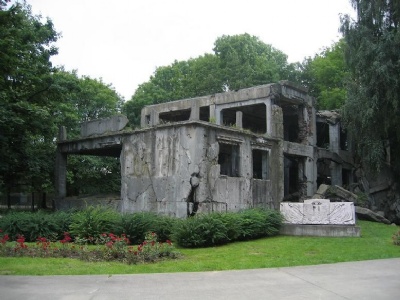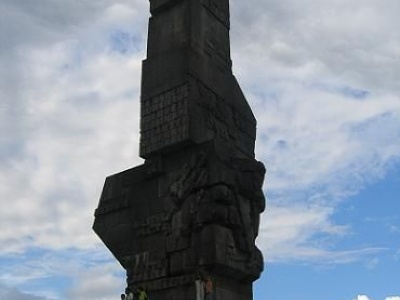Westerplatte
In the summer of 1939, Hitler began to claim the Polish corridor that divided German East Prussia from the rest of Germany. The corridor run straight through the free city of Danzig (present Gdansk) and all the way up to the Baltic sea. Danzig came after the First World War and the Versailles peace to become a Free city with its own constitution, government, parliament and currency, but without actually belonging to any country. A strange composition consisting of both Poles and Germans in which the newly formed League of Nations (NF) had the task of overseeing this hybrid state solution. Both Germans and Poles had national, political and economic interests that did not always coincide. When the Nazis grow stronger and became a political power in the thirties the city became a political topic used by the Nazis to the fullest. In November 1934, the senate appointed hardline Nazi, Arthur Greiser, as president.
The corridor that separated East Prussia from the rest of Germany became a reason for Hitler to make territorial claims on Poland in order to link East Prussia with Germany. Both Britain and France made promises in late summer 1939 to Poland for military assistance if Poland was attacked by Germany. At 04:45 on September 1, 1939, the German battleship Schleswig-Holstein opened fire on the Polish fortification at Westerplatte. The reason was that in 1925 the League of Nations had admitted that the Polish army could station a military force of 88 men. At the outbreak of the war, this force had been increased to 188 men. The garrison defended Westerplatte for a week when all necessary supplys began to subside and therefore had to surrendered. 15 Polish soldiers were killed and over 200 captured.
Current status: Demolished with monument (2008).
Address: Westerplatte, 80-001 Gdansk.
Get there: Car.
Follow up in books: Moorhouse, Roger: Poland 1939: The Outbreak of World War II (2020).




Schleswig-Holstein and Westerplatte have become symbols of the outbreak of the Second World War, but this can be discussed. Where and when Germany began what might be called acts of war September 1, is difficult to determine. The whole area is a mixture of monuments, ruins and museum. It’s also a place where people visit to just stroll around.